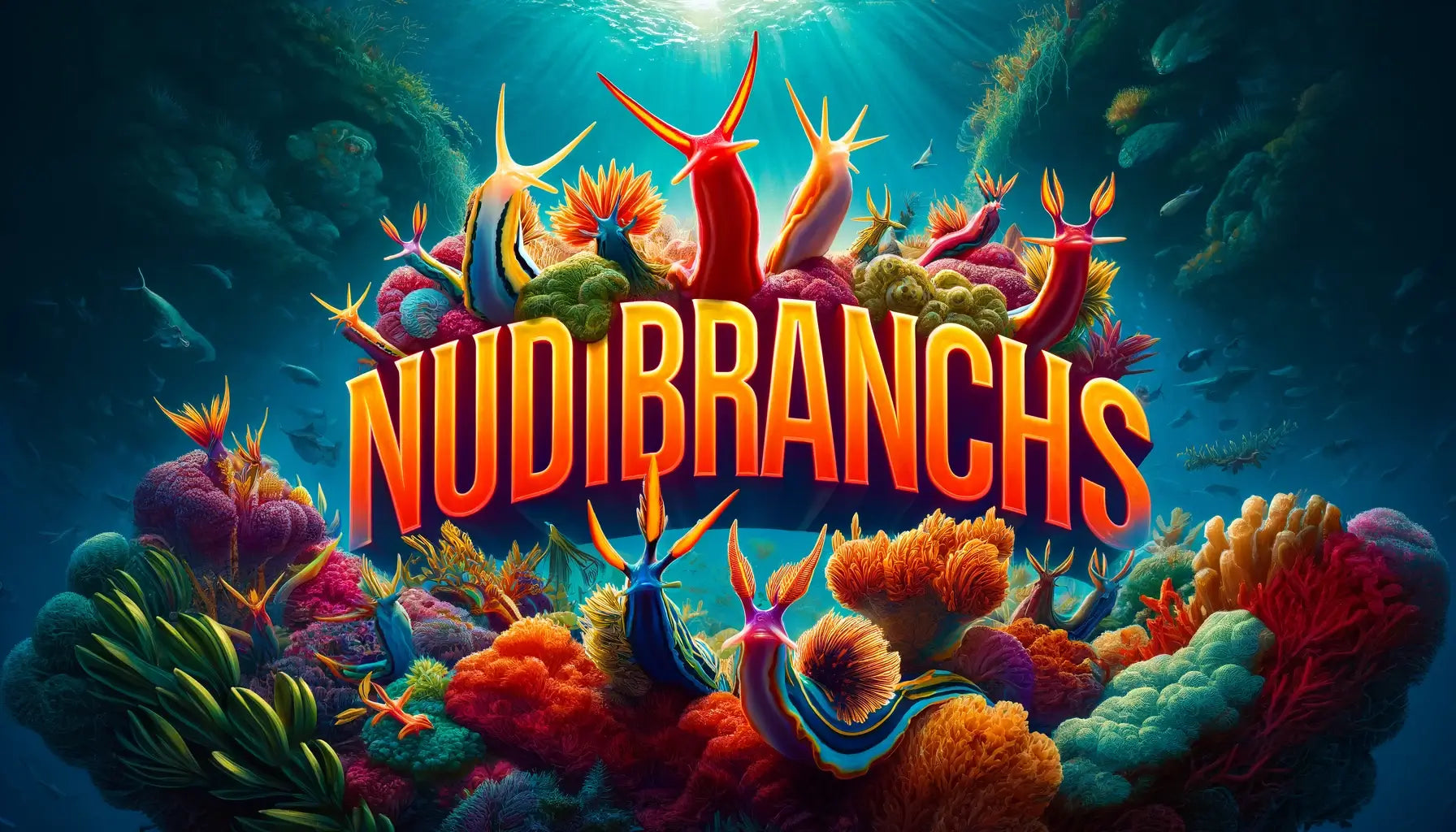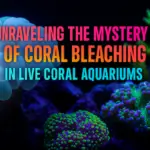Nudibranchs A Complete Guide
Reef aquariums are celebrated for their vibrant diversity and stunning array of marine life. Among the most captivating creatures that can be introduced to a reef tank are nudibranchs. These colourful, soft-bodied mollusks are not only visually striking but also play significant roles in the ecosystem. This comprehensive guide will delve into the fascinating world of nudibranchs, exploring their various types, diets, and ecological contributions in reef ecosystems.
What Are Nudibranchs?
Nudibranchs, often referred to as sea slugs, belong to the subclass Nudibranchia within the class Gastropoda. These marine gastropods are renowned for their brilliant colours and intricate patterns, which serve as a warning to potential predators about their toxicity. There are over 3,000 species of nudibranchs, each exhibiting unique forms and behaviours.
Types of Nudibranchs
Nudibranchs can be broadly categorised into two main groups based on their external morphology and internal anatomy: Dorid nudibranchs and Aeolid nudibranchs.
1. Dorid Nudibranchs (Suborder Doridina)
• Appearance: Dorids are characterized by their smooth, often oval-shaped bodies and a single gill plume located on their posterior end.
Example Species:
• Chromodoris willani: Known for its vibrant blue body with white and black markings.
• Jorunna funebris: Commonly called the “funeral nudibranch,” it has a white body with black spots.
2. Aeolid Nudibranchs (Suborder Aeolidina)
• Appearance: Aeolids are recognised by their numerous cerata (finger-like appendages) that cover their back, which serve both for respiration and defence.
Example Species:
• Flabellina iodinea: Also known as the “Spanish shawl,” this species is distinguished by its bright orange body and violet cerata.
• Berghia stephanieae: A popular species in reef tanks for its ability to control Aiptasia anemones.
Diet and Feeding Habits of Nudibranchs
Nudibranchs have highly specialised diets, often feeding on specific prey items. Their dietary preferences can be categorised based on their feeding mechanisms and prey:
1. Sponge Eaters
• Many dorid nudibranchs feed exclusively on sponges. They have evolved to consume the toxic compounds within sponges, which they then incorporate into their own tissues for defence.
• Example: Chromodoris annae is a sponge-eating nudibranch known for its blue and orange colouration.
2. Hydroid and Anemone Eaters
• Aeolid nudibranchs often feed on hydroids, anemones, and other cnidarians. They are capable of consuming the stinging cells (nematocysts) of their prey and using them for their own defence.
• Example: Berghia stephanieae is renowned for its ability to control populations of pest Aiptasia anemones in reef tanks.
3. Algae Eaters
• Some nudibranchs feed on various types of algae, contributing to the control of algal growth in reef ecosystems.
• Example: Elysia crispata, known as the “lettuce sea slug,” consumes algae and can photosynthesise through acquired algal chloroplasts.
Role of Nudibranchs in a Reef Ecosystems
Nudibranchs play several crucial roles in reef ecosystems, contributing to biodiversity and ecological balance:
1. Predators of Pests
• Certain nudibranch species help control populations of pest organisms, such as Aiptasia anemones, which can otherwise proliferate and harm coral reefs.
2. Indicators of Reef Health
• The presence and diversity of nudibranchs can serve as indicators of reef health. Healthy reefs tend to support a wide variety of nudibranch species.
3. Contributors to Biodiversity
• Nudibranchs add to the overall biodiversity of reef ecosystems, offering unique ecological niches and interactions with other marine organisms.
Caring for Nudibranchs in a Reef Aquarium
Successfully keeping nudibranchs in a reef aquarium requires careful attention to their specific needs and environmental conditions:
Tank Setup and Environment
• Tank Size: A minimum of 20 gallons is recommended for most nudibranchs, providing ample space for them to explore and find food.
• Water Parameters: Maintain stable water conditions with temperatures between 72-78°F, salinity levels of 1.023-1.025 specific gravity, and a pH of 8.1-8.4.
• Substrate and Rockwork: Provide a variety of live rock and crevices to mimic their natural habitat and offer hiding spots.
Feeding Requirements
• Diet: Ensure a steady supply of their preferred food sources, such as sponges, hydroids, or algae, depending on the species.
• Supplementation: For species like Berghia stephanieae, supplementing with Aiptasia anemones can help sustain their dietary needs.
Compatibility with Other Tank Inhabitants
• Fish: Avoid aggressive or predatory fish that may harm or stress nudibranchs.
• Invertebrates: Most reef-safe invertebrates, such as cleaner shrimp and small hermit crabs, can coexist with nudibranchs.
Challenges and Considerations
Keeping nudibranchs in a reef aquarium comes with several challenges and considerations:
Short Lifespan
• Nudibranchs generally have short lifespans, ranging from a few months to a year. This natural life cycle requires careful planning and management.
Specialised Diets
• Their highly specialised diets can make it challenging to ensure a consistent food supply, particularly for species with very specific prey requirements.
Sensitivity to Water Quality
• Nudibranchs are sensitive to changes in water quality. Regular monitoring and maintenance of optimal water conditions are crucial for their survival.
Popular Nudibranch Species for Reef Aquariums
1. Berghia Nudibranch (Berghia stephanieae)
• Colour: White to pale blue with orange cerata tips.
• Diet: Feeds exclusively on Aiptasia anemones.
• Benefits: Effective biological control for Aiptasia in reef tanks.
2. Spanish Shawl (Flabellina iodinea)
• Colour: Bright orange body with violet cerata.
• Diet: Feeds on hydroids and small anemones.
• Benefits: Adds vibrant colour and interest to the tank.
3. Lettuce Sea Slug (Elysia crispata)
• Colour: Green with ruffled edges resembling lettuce leaves.
• Diet: Feeds on algae and can photosynthesise through acquired chloroplasts.
• Benefits: Helps control algae growth in the aquarium.
4. Blue Dragon Nudibranch (Pteraeolidia ianthina)
• Colour: Iridescent blue with intricate cerata patterns.
• Diet: Feeds on hydroids and small anemones.
• Benefits: Unique appearance and beneficial for controlling certain cnidarians.
Conclusion
Nudibranchs are undoubtedly among the most colourful and intriguing inhabitants of reef ecosystems. Their diverse forms, specialised diets, and ecological roles make them fascinating subjects for reef aquariums. By understanding their specific needs and providing the appropriate care, aquarists can enjoy the beauty and complexity of these remarkable creatures. Whether you’re a seasoned hobbyist or new to the reef-keeping world, introducing nudibranchs to your aquarium can offer endless opportunities for observation and appreciation of these colourful wonders of the reef.








